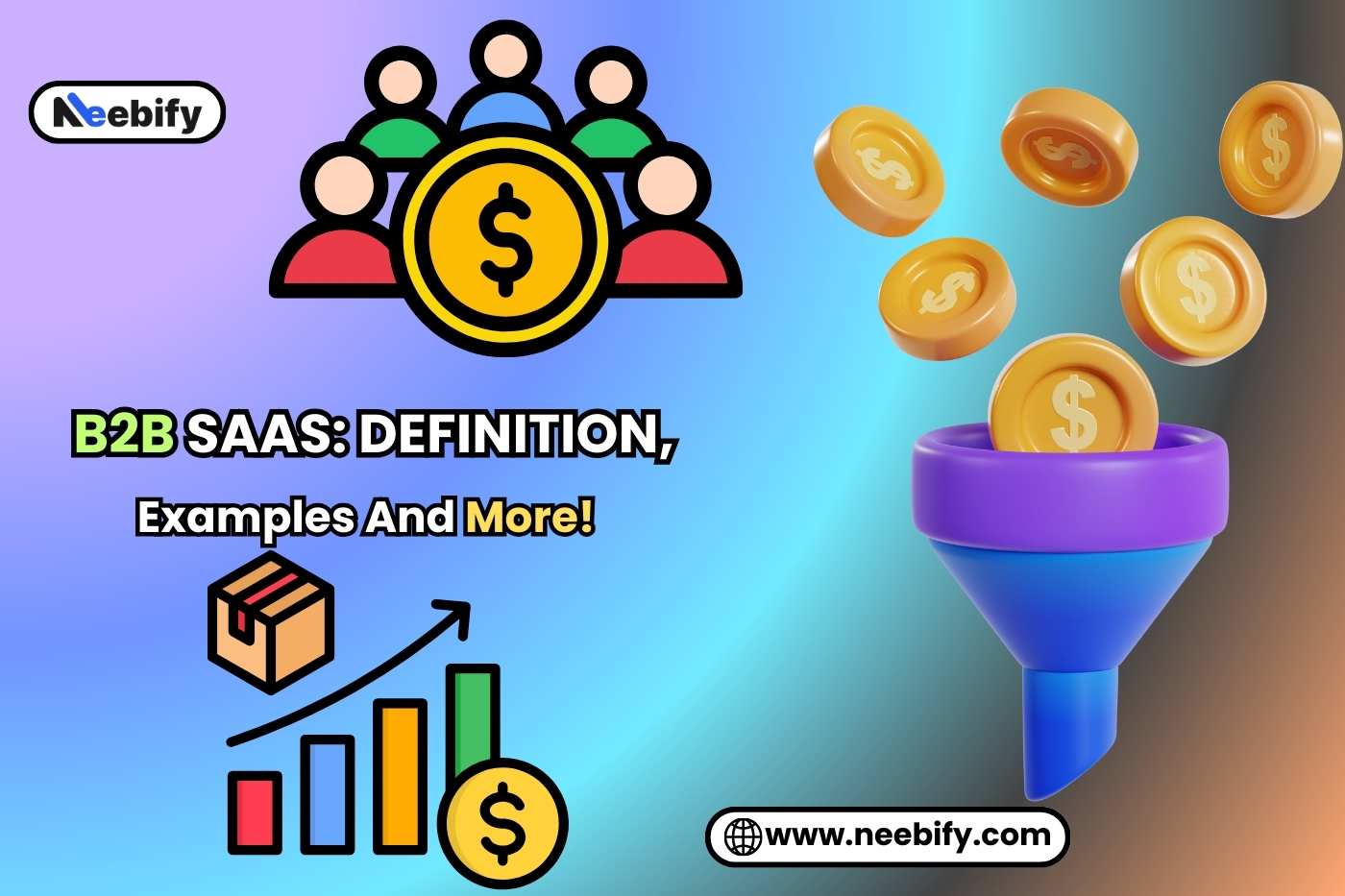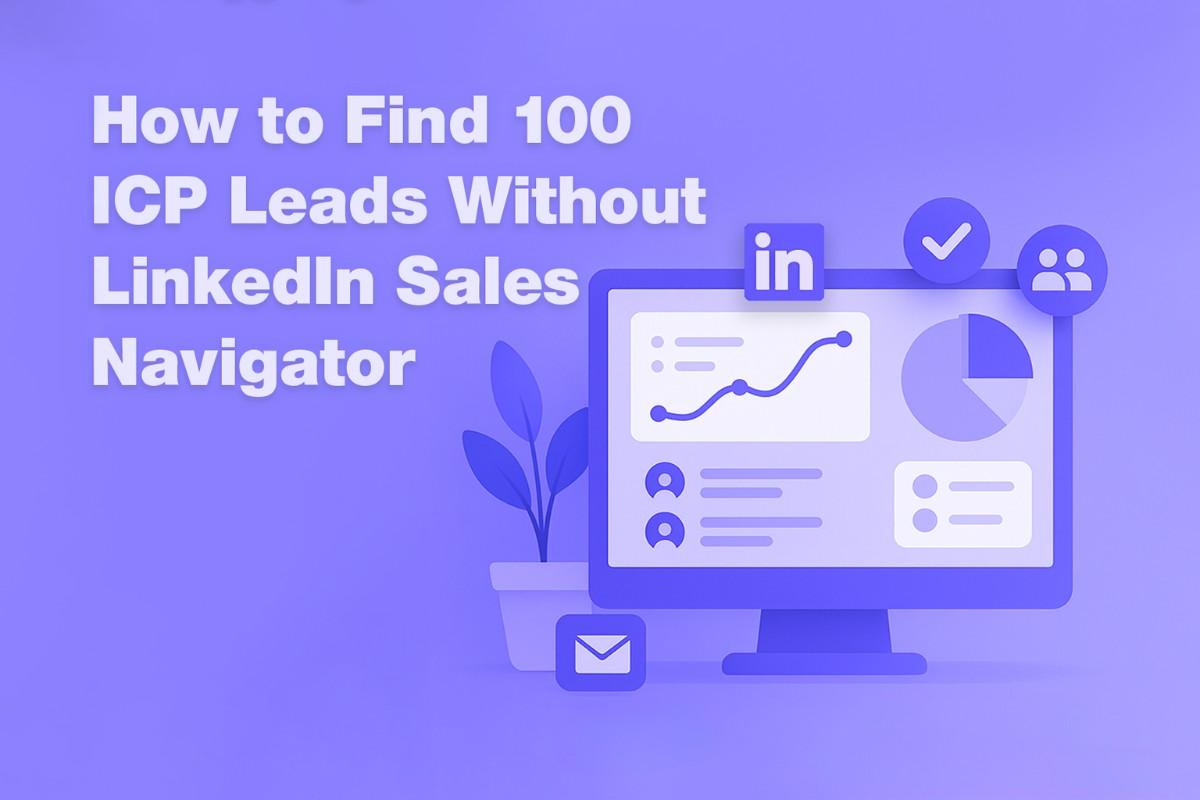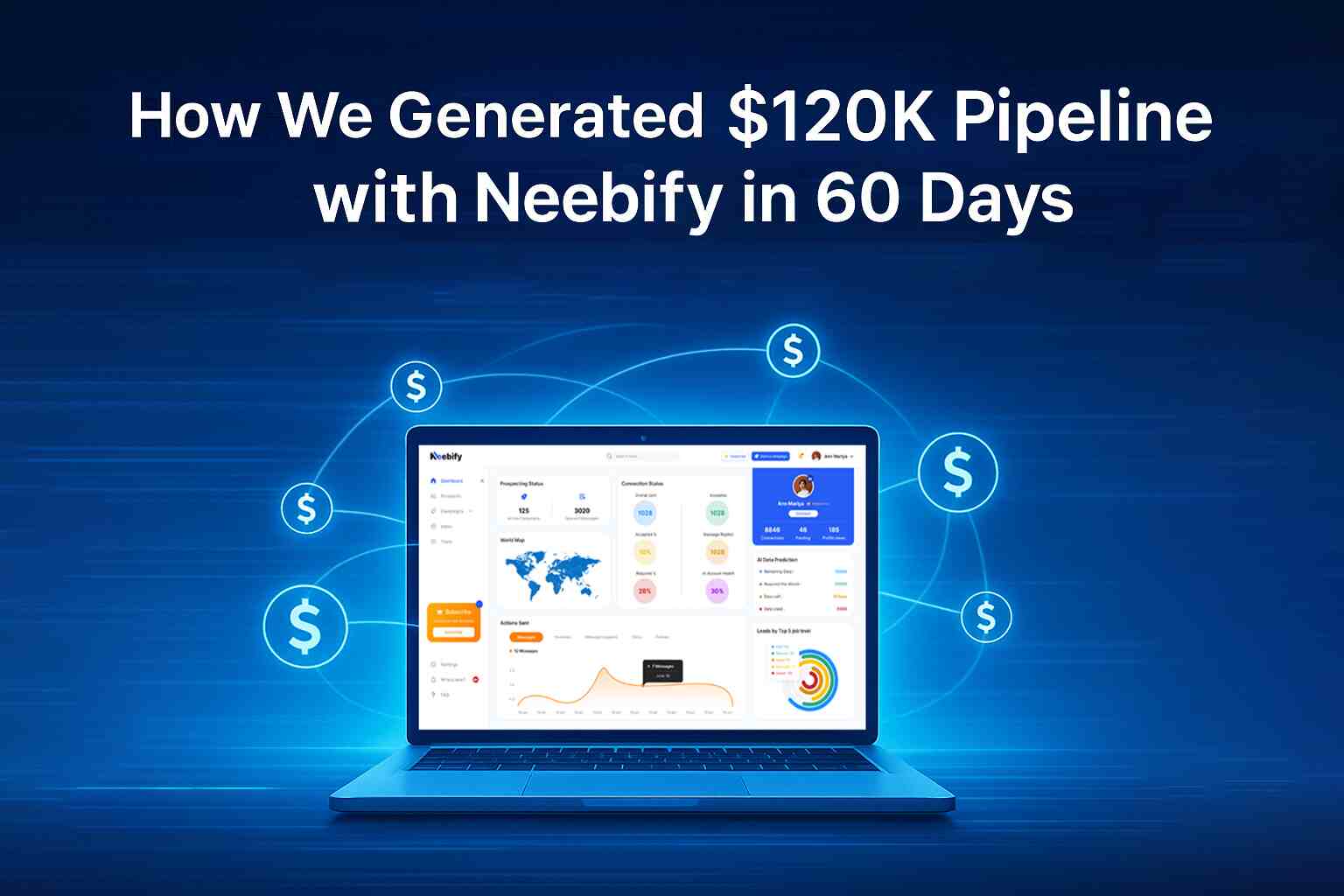Table of content
B2B SaaS: Definition, Examples, and More!
In today's fast-paced business environment, companies are increasingly reliant on technology to streamline their operations and improve efficiency. The most notable trend in the tech world is the rise of B2B saas software as a service. But what exactly is B2B SaaS, and why has it gained such popularity? In this article, we will explore the B2B SaaS definition, demonstrate real-life examples, shed light on the benefits of B2B SaaS, and reveal strategies related to SaaS for B2B businesses. Some key B2B SaaS trends and challenges are also included to be considered as we head into 2024.
What's B2B SaaS? Definition Here!
B2B SaaS is Software as a Service products created exclusively for business customers and not individual consumers. Under the B2B (Business-to-Business) model, the SaaS applications are marketed to other businesses for management purposes such as marketing, customer service, finance, and human resources.
Unlike many other types of software, where businesses need to install and maintain them on their servers, B2B SaaS products are hosted in the cloud, meaning companies only need an internet connection to access them. The platforms are subscription-based, often with flexible pricing models that can scale with the size and needs of a business.
15 Examples of B2B SaaS Companies
The best B2B SaaS platform are those that offer scalable, cloud-based solutions that businesses can easily adapt to. Here are 15 examples of B2B SaaS software which have impacted various industries significantly.
1. Salesforce: The CRM platform for sales, marketing, and customer services teams.
2. Slack: A team communication tool for business teams to collaborate in real time.
3. HubSpot: A marketing automation and CRM platform designed to help businesses grow by attracting and engaging customers.
4. Zendesk: A customer service and support platform that helps businesses manage customer queries and complaints.
5. Dropbox Business: A cloud storage solution for teams to store and share files securely.
6. QuickBooks Online: An accounting and finance software solution for small to medium-sized businesses.
7. Shopify: A platform for building and managing e-commerce sites.
8. Trello: A project management tool used to organize tasks and workflows for teams.
9. Mailchimp: An email marketing tool that helps businesses reach customers with targeted campaigns.
10. Asana: A tool for task and project management. It helps teams keep tabs on their work.
11. Gusto: An HR management system that makes payroll, benefits, and compliance easier.
12. Xero: Cloud-based accounting software for businesses of any size.
13. Intercom: A customer messaging platform that allows businesses to engage with their customers through live chat and bots.
14. Zoom: A video conferencing tool for businesses to have virtual meetings and webinars.
15. Monday.com: An operating system for work which helps businesses manage workflows, projects, and teams more efficiently.
These examples of B2B SaaS companies demonstrate the wide range of applications of SaaS in the business world, from communication and project management to customer service and accounting.
5 Advantages of Using B2B SaaS Products
Using "B2B SaaS" products has several advantages for businesses, making them an attractive option for organizations of all sizes. Here are five key advantages of SaaS for B2B:
1. Cost Efficiency: Traditional software requires heavy initial investments in hardware and licenses, along with periodic maintenance costs. In contrast, B2B SaaS pricing models often rely on subscription-based plans that reduce the initial financial burden while offering predictable, recurring costs.
2. Scalability: The more your business expands, the more so do your software needs expand. SaaS for B2B businesses gives flexibility to scale either upwards or downwards, and also helps in subscription plans according to current needs.
3. Automatic Updates: With B2B SaaS solutions, updates and bug fixes are automatically rolled out by the provider. This ensures that businesses are always using the most up-to-date version of the software without worrying about manual installation or downtime.
4. Remote Accessibility: Since B2B SaaS products are hosted in the cloud, they can be accessed from any place with an internet connection. This is particularly useful for businesses with remote teams or global operations.
5. Integration with Other Tools: Most B2B SaaS platforms easily integrate with other software tools so that businesses can create a comprehensive tech stack. This enables businesses to streamline processes and boost productivity across various functions such as sales and customer support.
How B2B SaaS Works?
It is in this context that businesses looking to utilize cloud-based software solutions must gain an understanding of how B2B SaaS works. B2B SaaS business model would involve a service provider hosting its software application in the cloud and letting customers access such through the internet. Usually, the pay for the services rendered by software is through subscriptions, which, in turn, are usually priced according to the number of users or features acquired.
One of the main reasons businesses opt for SaaS for B2B businesses is that it is easy to deploy. The software is hosted remotely, and companies do not have to install it on their servers or maintain the infrastructure. All they need is an internet connection and a device to access the service.
Top B2B SaaS Solutions 2025
As the B2B SaaS industry evolves, so will new solutions that emerge and boast of more advanced capabilities and features. Here are some of the top B2B SaaS solutions for 2025:
1. AI-powered Customer Support: B2B companies have also adopted AI-driven chatbots and customer support tools for enhanced service offerings, with reduced response times and a boost in customer satisfaction.
2. Advanced analytics and reporting: The advancement of B2B SaaS platforms that are equipped with the analytics functionalities of customer behavior, sales pattern, and operation performance further increases business applications.
3. Remote work solutions: A hybrid and remote work scenario drives the demand for B2B SaaS collaboration, communication, and project management products, and 2024 will see their further usage.
4. Cybersecurity SaaS: As concerns about the security of data are building, B2B SaaS solutions that come with advanced cybersecurity measures are an increasingly important offering for firms.
5. Cloud Financial Management: Cloud financial software has developed to provide better, end-to-end solutions in budgeting, forecasting, and accountancy in an integrated way.
B2B SaaS Techniques: 3 Strategies for Tech Companies
For technology companies looking to enter the B2B SaaS industry, it’s essential to implement the right strategies. Here are three effective B2B SaaS customer acquisition strategy for success:
1. Content Marketing: Create valuable, informative content that addresses the pain points and needs of your target audience. This could include blog posts, eBooks, case studies, and webinars that highlight the value of your B2B SaaS product.
2. Freemium Model: enterprise SaaS businesses model can be provided to a customer free of charge, but a version with extra functionalities to be paid for. This actually allows potential customers to test your product before subscribing.
3. Customer Success Programs: Develop strong customer success initiatives to help your users get the most out of your product. This can lead to higher retention rates, better customer satisfaction, and increased referrals.
B2B SaaS Metrics to Track
To ensure the success of a B2B SaaS business model, it's crucial to track key performance metrics. Here are some B2B SaaS metrics to track:
1. CAC: Customer Acquisition Cost is the cost incurred while acquiring a new customer which includes marketing and sales expenditure.
2. Churn Rate: Churn rate refers to the percentage of customers cancelling their subscription within a period. A high churn rate may be a sign of customer dissatisfaction.
3. Lifetime Value (LTV): It is the total revenue a customer is expected to generate for your business during his or her lifetime with your company.
4. Monthly Recurring Revenue (MRR): A major metric for SaaS companies, MRR is the predictable revenue that arises from active subscriptions every month.
5. Conversion Rate: This is the number of leads that actually turn into paying customers. It measures how efficiently your marketing and sales are working.
Challenges in the B2B SaaS Industry
While B2B SaaS presents numerous benefits, there are a few challenges that businesses must be cognizant of, including:
1. Customer Retention: Getting the customer to be retained with satisfaction and continue to use the service is always tough, especially with increasing competition.
2. Security Issues: Since the cloud stores even more sensitive data, proper protection of data and proper cybersecurity are to be dealt with by the businesses.
3. Scalability: With increased customer base, your infrastructure has to be able to scale with the demand, ensuring quality service.
4. Market Competition: The B2B SaaS space is highly competitive, and differentiating your product from others can be challenging.
Conclusion
B2B SaaS is transforming the way businesses operate, offering cloud-based solutions that enhance efficiency, scalability, and collaboration. With a strong B2B SaaS business model, companies can unlock the full potential of digital transformation. By understanding how SaaS works, adopting the right B2B SaaS metrics to track, and implementing proven B2B SaaS customer acquisition strategy, businesses can position themselves for success in this ever-evolving industry. As we move into 2025, staying on top of B2B SaaS trends and solutions will be essential to staying competitive in the market.
Get your next meeting in a
matter of minutes.
Free Trial
Latest
The Ultimate LinkedIn Outreach Playbook 2025
A practical, modern guide to mastering LinkedIn outreach in 2025 — learn how to boost reply rates, p
12/1/2025How to Find 100 ICP Leads Without LinkedIn Sales Navigator
Generating 100 targeted ICP leads doesn’t require LinkedIn Sales Navigator. Learn how to leverage fr
11/28/2025


